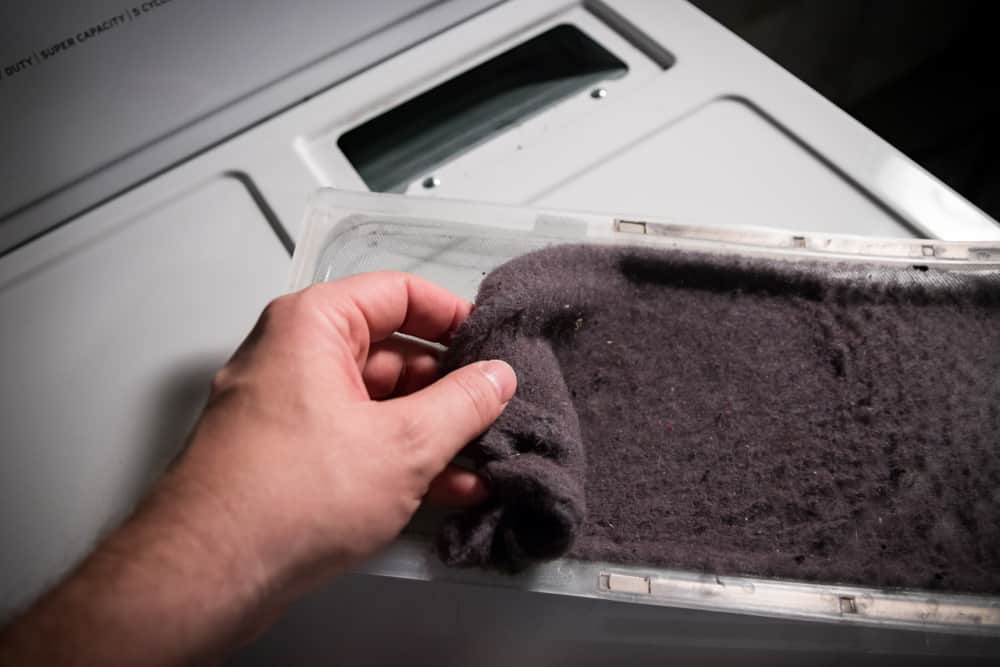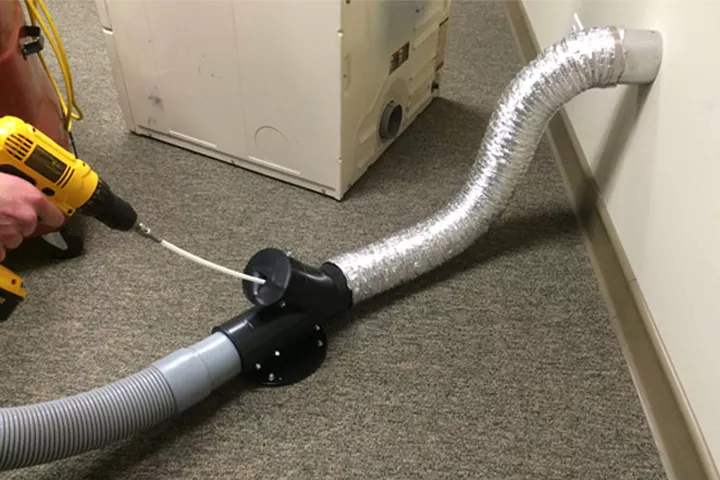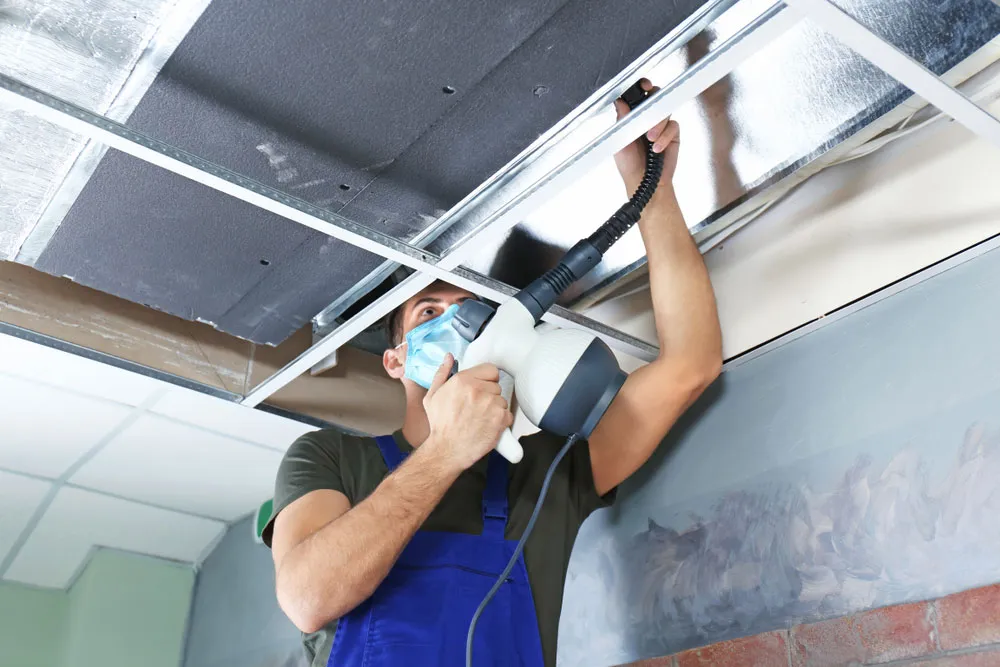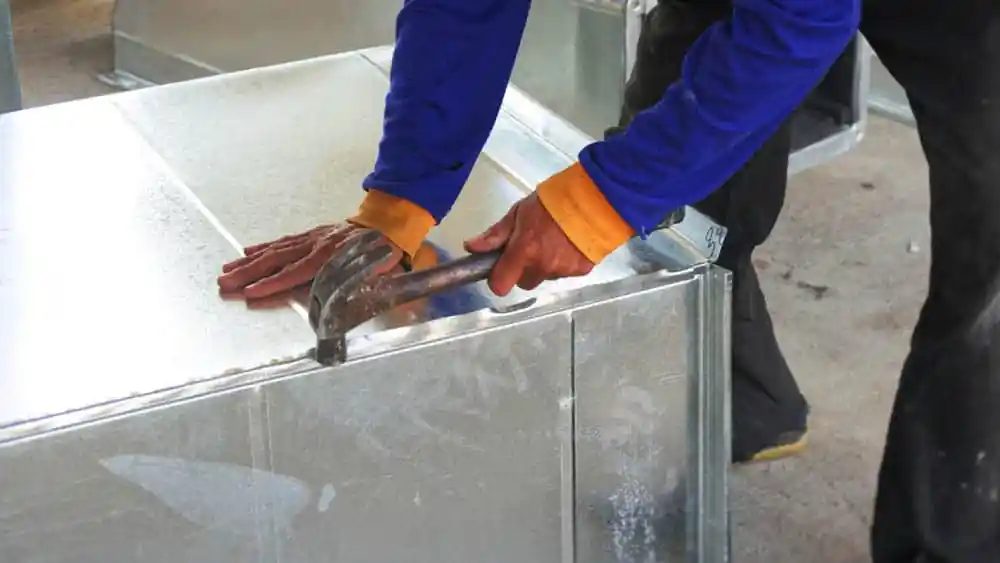That musty smell in your laundry room isn’t just from damp clothes—it could be a warning sign of something much more serious. When dryer vents become clogged, damaged, or poorly sealed, they trap warm, moist air inside your home. This creates the perfect conditions for mold growth and moisture-related damage, especially in hidden areas like walls and ceilings. Unfortunately, many homeowners don’t realize the risk until the damage is already done.
In this article, we’ll discuss how dryer vent repair can help prevent mold and moisture damage—and why it’s a smart step toward protecting your home.
Stops Leaks That Cause Moisture Buildup
Leaky dryer vents release humid air into walls, ceilings, or attics, where it can trap moisture and promote mold growth. This hidden moisture damages structural components, insulation, and indoor air quality over time.
Repairing the dryer vent seals leaks, replaces worn materials, and restores proper airflow, ensuring that moisture is vented outdoors. This helps protect your home from hidden damage and mold infestations.
Seals Loose Joints
Over time, the connections between dryer vent sections can loosen due to vibrations, temperature changes, or poor installation. When these joints pull apart, even slightly, warm and humid air begins leaking into surrounding spaces instead of being vented outside.
A proper repair involves tightening these joints and sealing them with high-temperature aluminum foil tape or secure clamps. This creates a smooth, sealed path for the air to exit the home without interruption, greatly reducing the risk of moisture buildup in walls or crawlspaces.
Closes Holes
Small holes or cracks in the vent duct can form from wear and tear or accidental damage. While they may not be immediately noticeable, they continuously release steam and moisture into surrounding areas every time you run the dryer.
During a repair, the entire duct system is inspected for these small leaks. Holes are patched using durable, heat-resistant materials—or, if the damage is extensive, the section is replaced altogether. This keeps all humid air contained within the vent system and directed outside where it belongs.
Upgrades Ducts
Many older homes still use flexible plastic or foil ducts that were once common. These materials degrade over time, sag, and tear easily, especially in warm, moist conditions. That makes them a poor barrier for moisture control and a common source of leaks and airflow issues.
Modern vent repair includes replacing outdated or damaged ducts with rigid or semi-rigid metal types. These are far more durable, maintain a smooth interior for better airflow, and are less likely to leak or collapse. Upgrading your vent material is one of the best long-term ways to prevent indoor moisture problems and ensure your dryer operates efficiently.
Prevents Moisture Backflow
Improper dryer vent systems can cause moist air to flow back into your home instead of being vented outside. This backdraft increases humidity, leading to peeling paint, warped wood, and mold growth, especially in poorly ventilated areas.
Repairing the system fixes issues like improper duct slope, missing exterior flaps, and lack of insulation, ensuring that moisture is efficiently directed outside and doesn’t return.
Fixes Duct Angle
One of the most common causes of backdrafts is an incorrectly sloped dryer duct. If the duct doesn’t slope downward toward the vent exit, moisture-laden air may collect inside and flow back toward the dryer and into your home.
During repair, professionals check the entire length of the duct to ensure it slopes correctly—usually with a slight downward angle of at least 1/4 inch per foot. Fixing the slope helps gravity do its job, pushing moisture out efficiently and preventing pooling or reversal of airflow.
Repairs Exterior Flap
The exterior vent flap is a small but crucial part of your dryer vent system. When it functions properly, it opens when the dryer runs and closes tightly when it stops—keeping outside air and moisture from entering your home.
However, if this flap is broken, stuck, or missing altogether, cold or humid outside air can flow freely into your ducts. Repair involves cleaning or replacing the flap with a weatherproof model that seals tightly and moves freely. This small fix keeps the moist outside air from creeping indoors.
Adds Insulation
In colder parts of your home like attics, basements, or crawl spaces, warm air inside the duct can cool rapidly. This sudden temperature drop causes condensation to form on the duct’s interior—adding moisture to your vent system
Adding insulation around the duct keeps the temperature stable and prevents this condensation. Foam or fiberglass sleeves are often used for this purpose. This repair step not only reduces moisture buildup but also improves energy efficiency by keeping heated air from escaping too quickly.
Removes Moisture-Holding Lint
Lint is not only a fire risk but also absorbs moisture from the hot air in your dryer vent. As it builds up, it traps moisture, creating ideal conditions for mold growth inside the ducts or nearby areas.
Dryer vent repair clears the lint, upgrades duct materials, and improves airflow, preventing moisture buildup and ensuring a dry, safe system.
Deep-Cleans the Vent
Lint can stick to every inch of the vent’s inner surface, especially in older or rarely serviced systems. Over time, layers of lint reduce the vent’s diameter and trap even more moisture, slowing down airflow and raising humidity inside the vent.
Professional repair includes a full dryer vent cleaning using rotary brushes and vacuums that reach from the dryer to the outside vent hood. This deep-cleaning process not only clears visible lint but also removes hidden debris that can hold moisture and fuel mold growth.
Replaces Problem Ducts
Plastic and foil ducts, commonly used in older setups, have ribbed or flexible interiors that catch lint more easily. These materials are also more prone to sagging, tearing, or collapsing, which further traps moisture and debris.
A proper repair replaces these outdated materials with rigid or semi-rigid metal ducts that have smooth interiors. These upgraded ducts resist lint buildup and allow air and moisture to move through quickly and cleanly, reducing the risk of mold and water damage.
Improves Air Speed
Air velocity is key to keeping your dryer vent dry. When ducts are clogged or damaged, airflow slows down, which allows moist air to linger inside the vent instead of being expelled outdoors quickly.
Repair improves airspeed by cleaning the entire duct line, sealing any leaks, and straightening out bends or kinks. With stronger, faster airflow, the dryer system can push out moisture more effectively—helping to prevent future buildup and ensuring the vent stays dry between loads.
Read More: Top 10 Ways Air Duct Cleaning Can Improve Your HVAC System
Reduces Mold Risk
Moisture leaks from a faulty dryer vent can lead to hidden mold growth behind walls or in ceilings. As mold spreads, it releases spores into the air, triggering allergies, asthma, and other respiratory issues—especially for kids, seniors, and those with existing conditions.
Dryer vent repair addresses this at the source. By clearing lint, sealing leaks, and restoring airflow, it prevents damp conditions and keeps mold from developing in the first place.
Blocks Mold
When a dryer vent leaks humid air into nearby walls, ceilings, or crawl spaces, the moisture can seep into connected rooms. Mold thrives in these damp environments and can easily spread into areas where your family lives, eats, or sleeps.
Repair ensures that all connections are sealed and vented air is directed safely outside. This prevents moisture from creeping into your living space and helps keep the areas around your dryer—and your whole home—dry and safe from mold.
Removes Musty Odors
One of the first signs of hidden mold is a musty, unpleasant odor. This smell often comes from walls, ducts, or corners near the laundry area and lingers even after cleaning. These odors don’t just make your home uncomfortable—they also signal that mold may be actively growing behind the scenes.
By repairing the dryer vent system, you remove the root cause of that odor. When the vent is sealed, cleaned, and flowing properly, it stops pushing moist air into your home and eliminates the environment mold needs to thrive—along with the bad smells it creates.
Stops Allergens
Dryer vents that leak or allow backdrafts can send mold spores and lint particles into the air, increasing the number of airborne allergens inside your home. These allergens can irritate the lungs, eyes, and skin, especially in people with allergies or asthma.
A well-repaired vent system keeps these allergens from spreading. It expels them safely outdoors instead of allowing them to build up indoors. As a result, your indoor air quality improves, making your home healthier and more comfortable for everyone.
Prevents Costly Damage
Neglecting dryer vent issues may not seem urgent, but over time, it can lead to major—and expensive—problems. Moisture that leaks into walls or attics can cause drywall to warp, insulation to rot, and even weaken wooden structures. These repairs go far beyond basic maintenance and often require professional mold remediation or construction work.
By investing in dryer vent repair early, you’re not just fixing airflow—you’re protecting your home’s long-term value. Quick action today can prevent thousands of dollars in damage tomorrow, making it one of the smartest home maintenance decisions you can make.
Stops Mold Early
Mold thrives in humid environments, and a leaking or clogged dryer vent provides exactly that. Once mold takes hold behind your walls or in your attic, removing it becomes a complex and costly process. You may need to replace entire sections of drywall, wood framing, or insulation, depending on how far the mold has spread.
Dryer vent repair acts as a first line of defense. By stopping the moisture before it escapes, repairs keep mold from starting in the first place. This saves you the significant cost of remediation and avoids the disruption of tearing out parts of your home to fix hidden mold colonies.
Read More: What is Chimney Pointing and Why is it Important?
Extends Dryer Lifespan
Poor venting puts extra stress on your dryer. When heat and moisture get trapped inside due to blockages or damaged ducts, your dryer has to work harder to do the same job. This overwork leads to faster wear on components like the motor, heating element, and sensors.
A properly repaired vent system restores smooth airflow, allowing the dryer to run at its intended efficiency. With less strain and lower operating temperatures, the appliance stays in better condition, helping you avoid costly repairs and extending its usable lifespan.
Improves Dryer Efficiency
When your dryer vent is in good condition, your dryer works better. Air moves freely, moisture escapes quickly, and clothes dry faster—saving you time and energy.A well-repaired vent system helps your appliance perform at its best, reducing wear and tear while improving day-to-day convenience. It’s one of the easiest ways to boost appliance performance without buying a new unit.
Speeds Up Drying Time
Blocked or damaged vents trap heat and moisture, forcing clothes to take longer to dry. This wastes energy and increases the risk of mold inside the machine.
Repairing the vent restores proper airflow.
Hot, moist air exits quickly, helping clothes dry in a single cycle instead of multiple runs. You’ll also notice fresher-smelling laundry and fewer wrinkles.
Reduces Heat Buildup
Restricted vents cause heat to build up inside the dryer and surrounding areas. This raises fire risks and may damage sensitive dryer parts over time.A clear and functional vent system allows heat to escape efficiently. This not only keeps your dryer cooler but also protects the appliance from overheating or malfunctioning. In the long run, it helps maintain your dryer’s internal components.
Lowers Energy Use
- When your dryer struggles to push out moist air, it runs longer to get the job done. This increases your electricity bill over time—even if you don’t notice it right away.Repairing the dryer vent improves airflow, so the dryer works less and dries faster. With shorter cycles and less strain on the appliance, you save energy and money with every load. Even a single extra load per week can add up over time.
- Worried About Mold or Moisture in Your Home?
- A damaged dryer vent might be the hidden cause. Moist air escaping into your walls or attic can lead to serious mold problems and costly repairs. At Delta Clean Air, we specialize in dryer vent repair that prevents mold and moisture damage before it starts. From sealing leaks to rerouting ducts, our expert team ensures your system vents properly and safely.
- Keep your home dry, healthy, and mold-free—contact us today to schedule your dryer vent repair!






